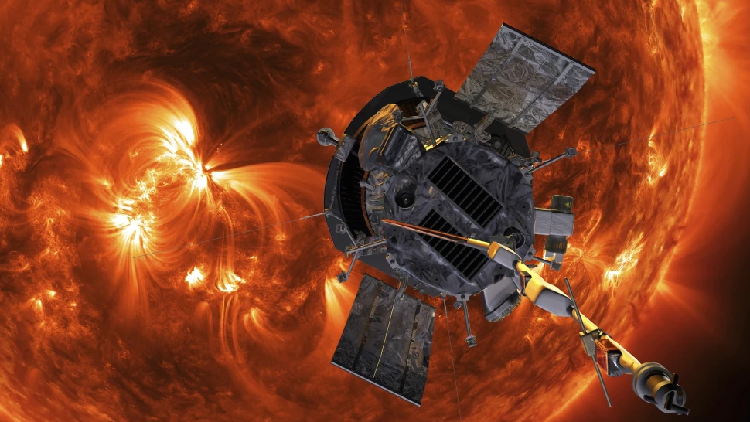NASA's Solar Probe Set to Approach the Sun Closer Than Ever Before
NASA's solar probe is set to achieve unprecedented proximity to the sun, embarking on a mission to explore its outer atmosphere more closely than ever before.

Launched in 2018, the Parker Solar Probe has been tasked with capturing detailed images of the sun. It has already traversed the sun's corona, the outer atmosphere that becomes visible during a total solar eclipse.
The upcoming milestone involves Parker making its closest approach to the sun, with plans for it to zoom through the intense solar atmosphere and come within a groundbreaking 3.8 million miles of the sun's surface on Tuesday.
In this scenario, if the sun and Earth were positioned at opposite ends of a football field, Parker "would be on the 4-yard line," according to NASA's Joe Westlake.
Mission control will have to wait several days to learn about Parker's condition after the flyby, as the spacecraft will be out of communication range during this period.
Parker is set to fly more than seven times closer to the sun than any earlier spacecraft, reaching speeds of 430,000 mph at its closest point. It is the fastest spacecraft ever constructed and features a heat shield capable of enduring temperatures up to 2,500 degrees Fahrenheit.
The probe will continue its close orbits around the sun until at least September. Scientists are eager to uncover the reasons behind the corona's temperatures being hundreds of times hotter than the sun's surface and to gain insights into the mechanics of the solar wind—a constant stream of charged particles emitted by the sun.
While the sun's warmth is essential for life on Earth, it can also produce severe solar storms that temporarily interfere with radio communications and disrupt power systems.
Currently, the sun is in the peak phase of its 11-year cycle, resulting in vibrant auroras appearing in unexpected regions.
"It both is our closest, friendliest neighbor," Westlake noted, "but also at times is a little angry."
Rohan Mehta for TROIB News
Discover more Science and Technology news updates in TROIB Sci-Tech












